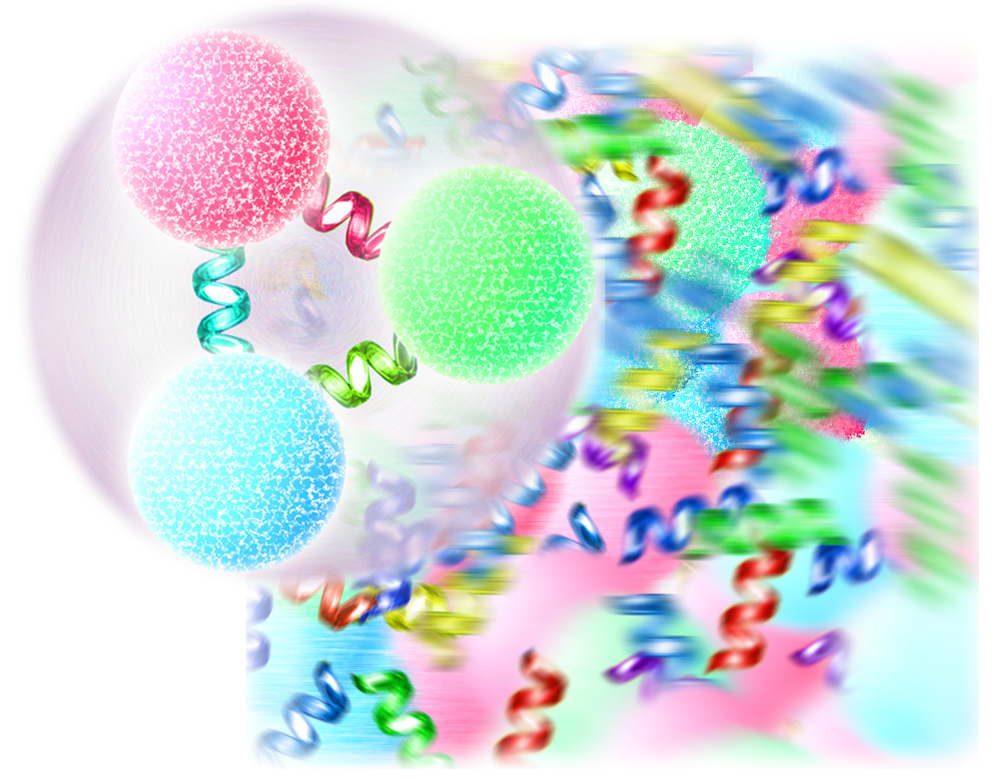Hottest Particle Soup May Reveal Secrets of Primordial Universe

A soup of ultra-hot elementary particles could be the key to understanding what the universe was like just after its formation, scientists say.
Over the past few years, physicists have created this soup inside two of the world's most powerful particle accelerators — the Large Hadron Collider (LHC) in Switzerland and the Relativistic Heavy Ion Collider (RHIC) in New York — by smashing particles together at superfast speeds.
When two particles collide, they explode into pure energy powerful enough to melt down atoms and break apart protons and neutrons (the building blocks of atomic nuclei) into their constituent quarks and gluons. Protons and neutrons contain three quarks each, and gluons are the mass-less glue that holds the quarks together.
The result is a plasma scientists call an "almost-perfect liquid," with almost zero friction.
Hotter than the sun
At temperatures between 7 trillion and 10 trillion degrees Fahrenheit (4 trillion and 6 trillion degrees Celsius), this "quark-gluon plasma" is the hottest thing ever created on Earth, and is about 100,000 times hotter than the center of the sun.
"We now have created matter in a unique state, composed of quarks and gluons that have been liberated from inside protons and neutrons," said Steven Vigdor, a physicist at Brookhaven National Laboratory, which hosts the RHIC. This bizarre state of matter is thought to closely resemble the form of matter in the universe just a few fractions of a second after it was born in the Big Bang about 13.7 billion years ago. [Album: Behind the Scenes at RHIC]
Get the Space.com Newsletter
Breaking space news, the latest updates on rocket launches, skywatching events and more!
"Many critical features of the universe were established at those very early moments in the infancy of the universe," Vigdor said today (Aug. 13) at the Quark Matter 2012 particle physicists conference in Washington, D.C.
Soon after this phase of the universe, quarks and gluons would have combined to form protons and neutrons, which would have grouped with electrons a while later to form atoms. These eventually built the galaxies, stars and planets that we know today.
To better understand how this happened, scientists aim to experiment on this primordial soup to study its properties, such as its viscosity, which is a measure of its internal friction, or resistance to flow. Compared with everyday liquids such as honey or even water, quark-gluon plasma has very little viscosity.
This plasma is also extremely dense, with particles packed in more tightly than neutron stars, the compressed balls of matter that result when some stars explode in supernovas.
"We do have now the tools in place to really experiment with it …and figure out precisely what kind of stuff this really is and why it has these extraordinary properties," said Jurgen Schukraft, a physicist at the CERN physics lab in Geneva, home of the LHC.
Cannonballs through plasma
One of the ways scientists experiment on this state of matter is by shooting other particles through it.
Charm quarks, for example, are a flavor of quark 100 times more massive than the up and down quarks that form protons and neutrons. When physicists at the Large Hadron Collider's ALICE experiment injected particles containing charm quarks into the quark-gluon plasma, they found that the plasma's flow was so strong it dragged the charm particles along with it, eventually slowing down their passage.
"Even though they're very heavy and they go through like cannonballs, they are slowed in the end,"Schukraft said. "This matter has an enormous capacity to stop even very heavy particles."
Scientists have been questing after quark-gluon plasma for years. In 2005, physicists suspected they had created it inside RHIC, but it wasn't until 2010 that they verified they had created matter hot enough to give rise to the extreme state.
This story was provided by LiveScience, a sister site to SPACE. Follow Clara Moskowitz on Twitter @ClaraMoskowitz or LiveScience @livescience. We're also on Facebook & Google+.
Join our Space Forums to keep talking space on the latest missions, night sky and more! And if you have a news tip, correction or comment, let us know at: community@space.com.

Clara Moskowitz is a science and space writer who joined the Space.com team in 2008 and served as Assistant Managing Editor from 2011 to 2013. Clara has a bachelor's degree in astronomy and physics from Wesleyan University, and a graduate certificate in science writing from the University of California, Santa Cruz. She covers everything from astronomy to human spaceflight and once aced a NASTAR suborbital spaceflight training program for space missions. Clara is currently Associate Editor of Scientific American. To see her latest project is, follow Clara on Twitter.










